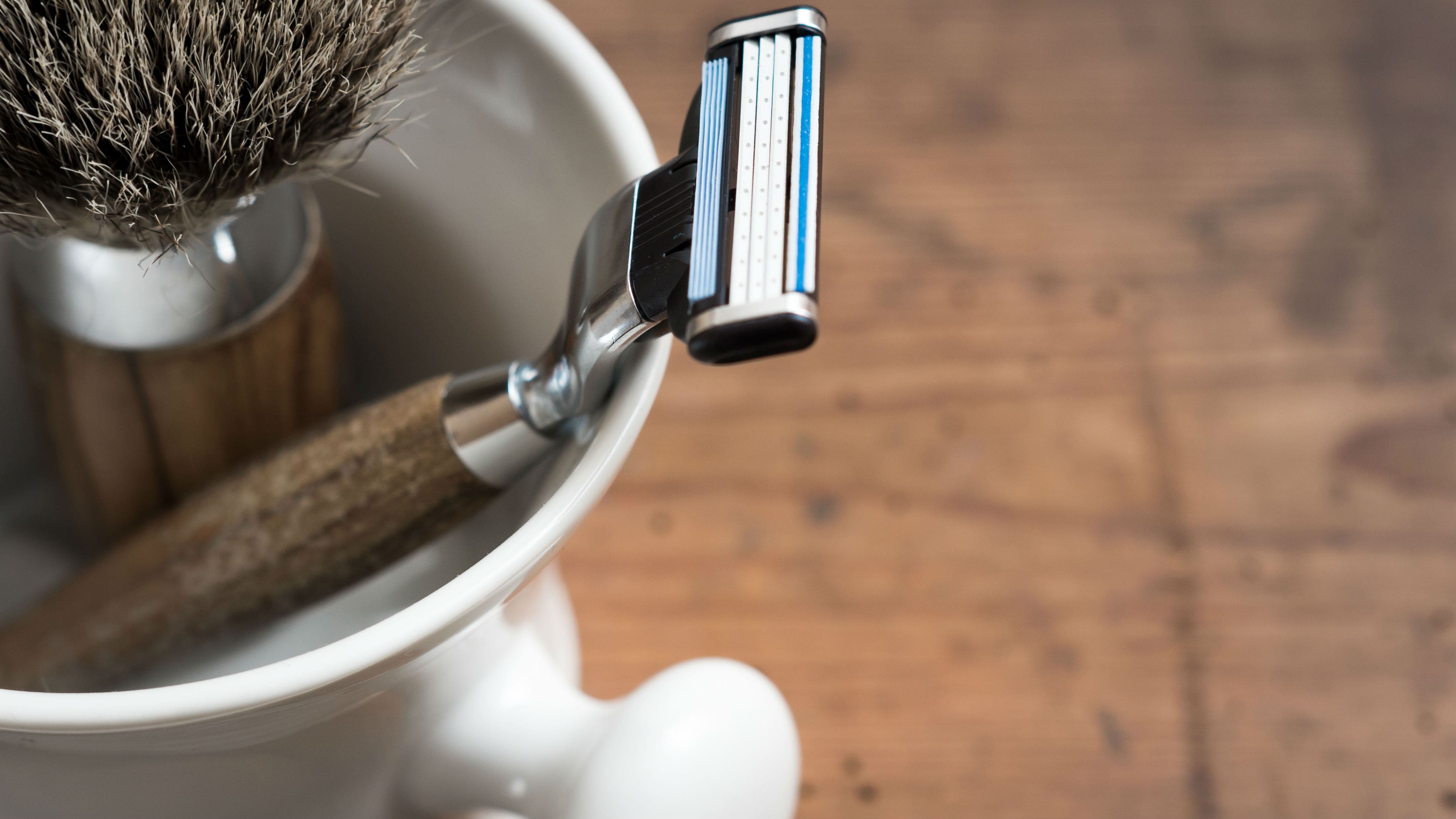 The removal of unwanted body hair has happened since the dawn of time. Over the years the practice of removing body hair has changed from simple human hygiene to fashion, social or religious status. As shaving has evolved over time so too have the tools of the trade.
The removal of unwanted body hair has happened since the dawn of time. Over the years the practice of removing body hair has changed from simple human hygiene to fashion, social or religious status. As shaving has evolved over time so too have the tools of the trade.Stone Age
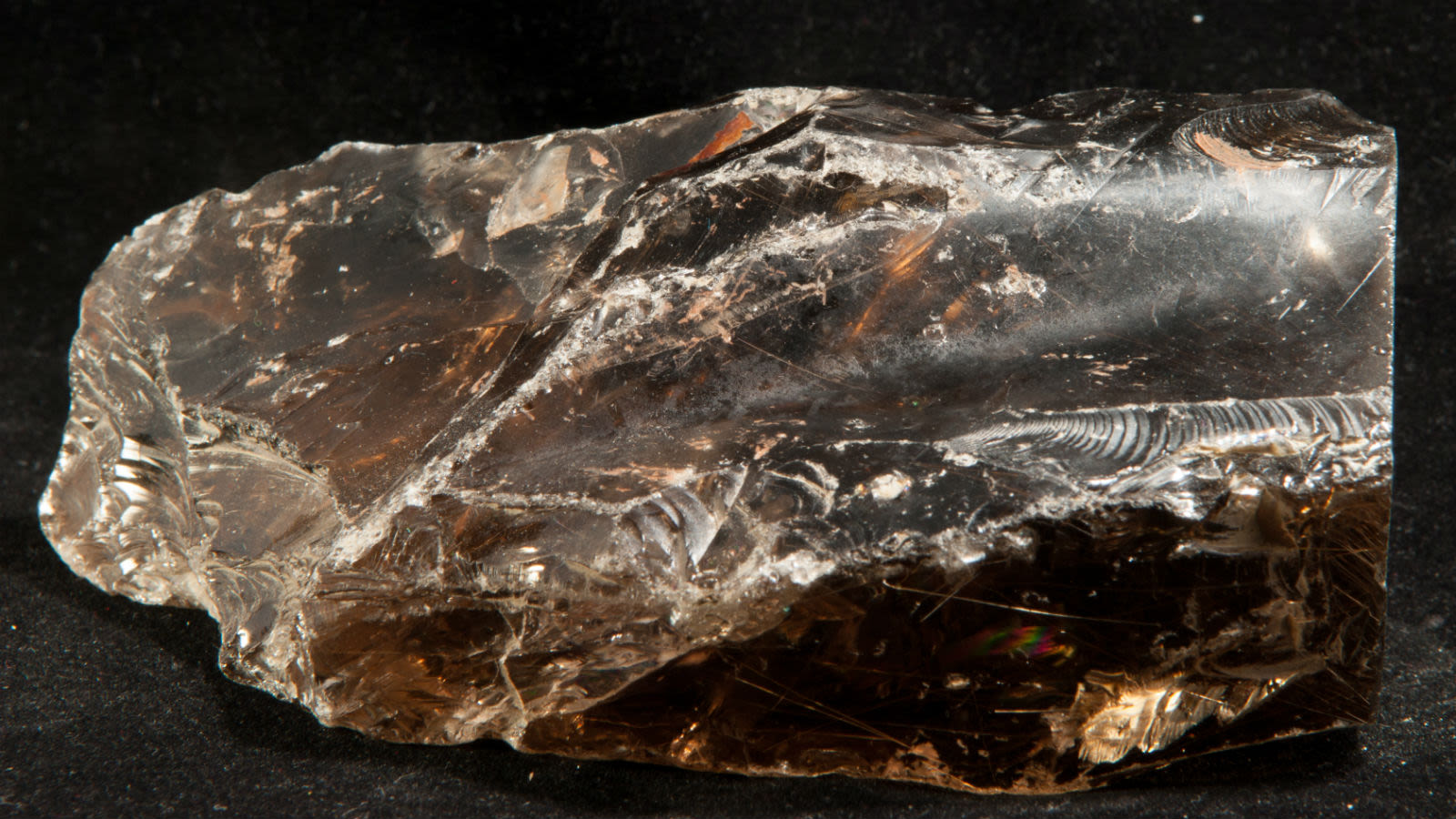
Flaked obsidian was equally useful as a hand axe and shaving stone.
Our early ancestors are usually depicted as unshaven vagabonds, but the unrelenting winter of the last Ice Age, made facial hair a liability. When wet, the hair would hold water against the skin until frozen, with the possibility of frostbite. To remove the facial hair, early humans about 100,000 years ago are believed to have pulled out their hairs mainly using seashells like tweezers, as depicted in cave paintings. Around 60,000 years later, the technique had advanced from plucking to actually shaving using flakes of obsidian and clam shell shards.
The first depilatory creams, made from arsenic, quicklime, and starch, first appeared around 3000 BC, and were used mainly by women. At the same time, the agricultural revolution gave rise to settlements, metalworking, and eventually, metal blades.
Egyptian Era
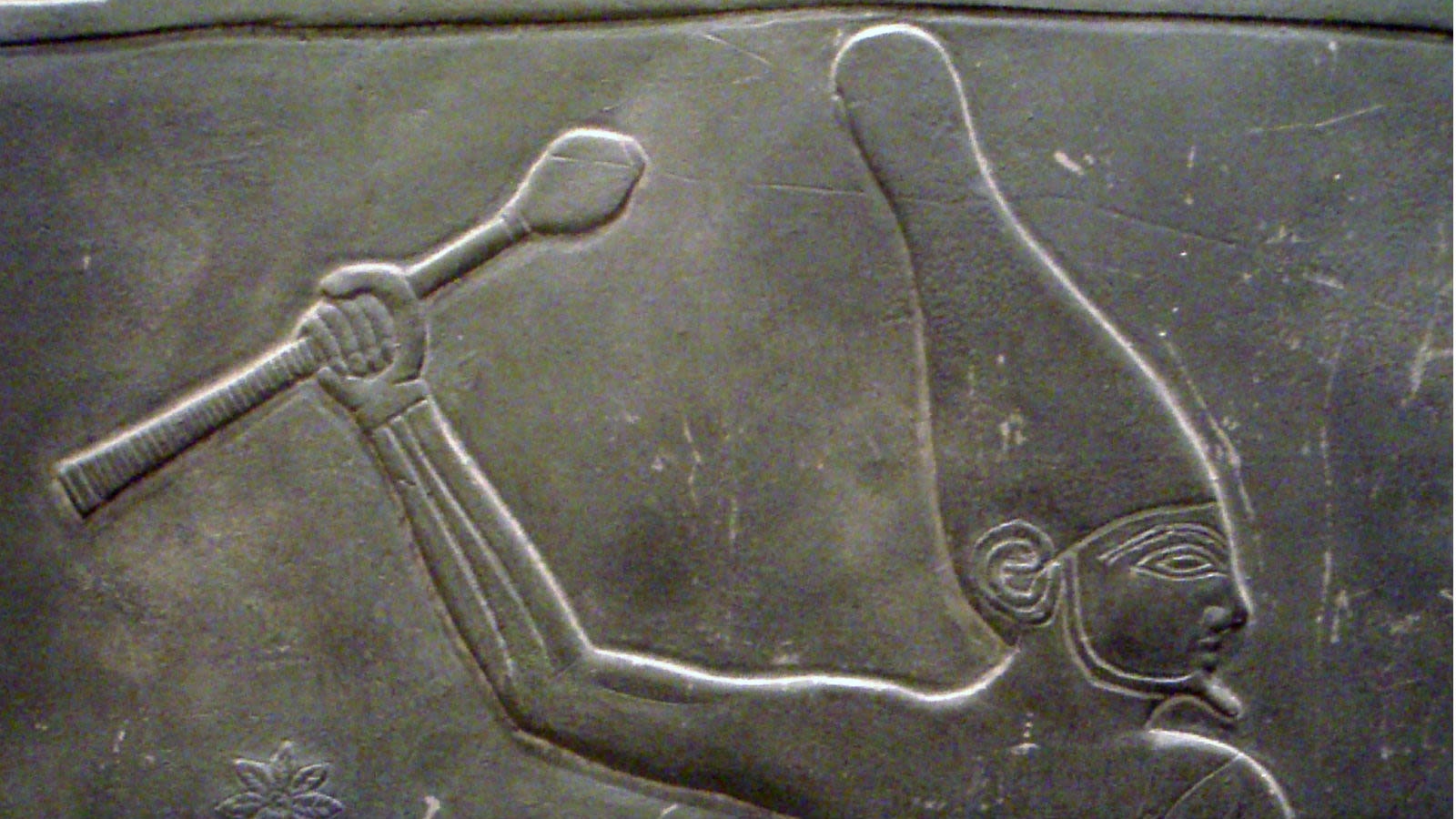
Egyptian King Narmer wearing the White Crown and a false beard
Around 400 BC the Egyptians "set cleanliness above seemliness" and bathed several times a day and maintained a strict regimen of shaving their bodies clean. Everybody, especially the upper classes, went completely bare.
Egypt is hot—and living along the muggy shores of Nile River with shoulder length hair is not desirable. Furthermore, long hair can house pests and diseases. This early health advantage eventually evolved into the mark of the "superior" Egyptian civilization, wherein only barbarians, peasants, slaves, mercenaries, and criminals sported hair.
To achieve this hairless state, Egyptians routinely applied depilatory creams and rubbing with a pumice stone to remove stubble. Archaeologists have also found both circular bronze razors and hatched-shaped "rotary" blades in many burial chambers, for use in the afterlife.
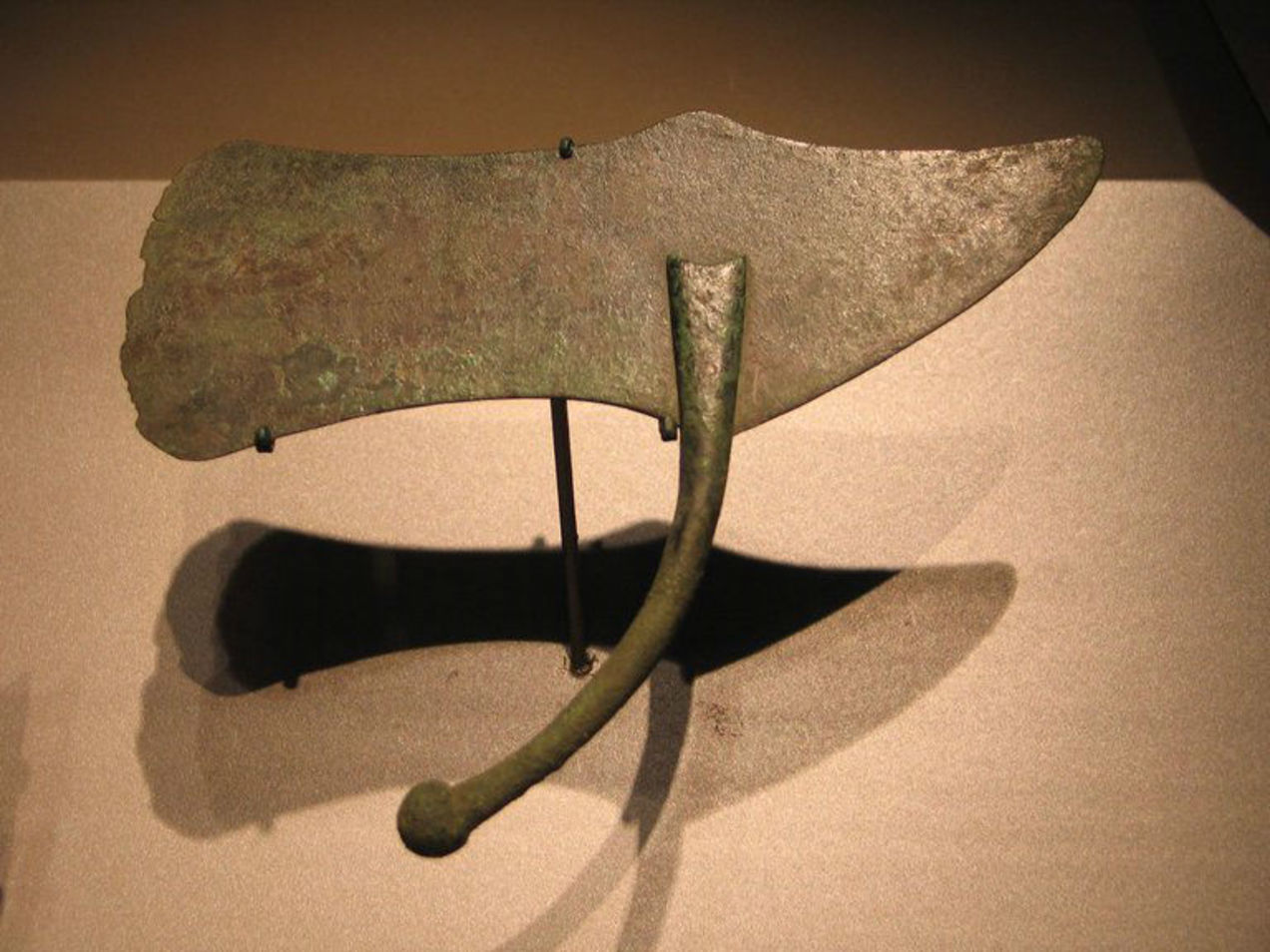
Egyptian Rotary Razor
Growing facial hair was viewed as a sign of personal neglect, similar to wearing the same outfit to the office three days in a row. Anybody who could afford the luxury, hired a household barber to keep everybody tidy. The position of barber was a well-regarded station in that society, comparable to doctors and other professional trades.
Roman Era
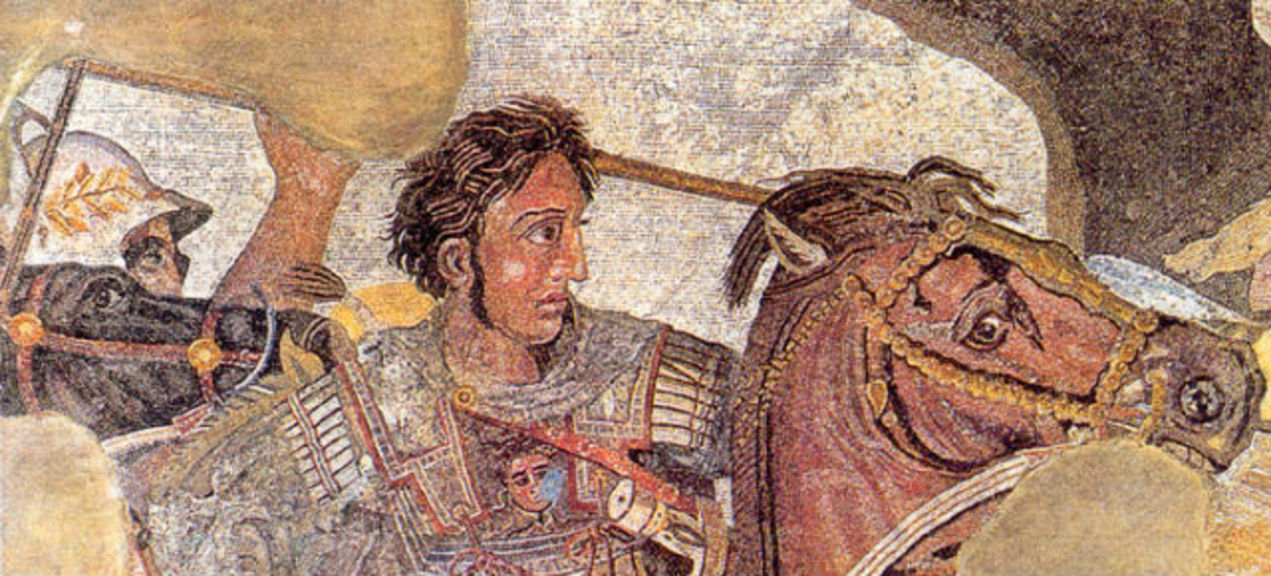
Alexander fighting King Darius III of Persia
People were impressed by the Egyptians' fanatical attention to hygiene. By the fourth century BC, the practice had made its way north to Greece and Rome, thanks to Alexander the Great. He ordered his troops to shave off their hair to deny the enemy something to grab onto during hand to hand combat.
Alexander's endorsement of shaving immediately made it not only socially acceptable, but also fashionable. In the years to follow, the original circular razor design pioneered by the Egyptians was straightened into a form very similar to the razors we use today. The quality of the construction also improved, replacing easily dulled bronze with copper and iron.
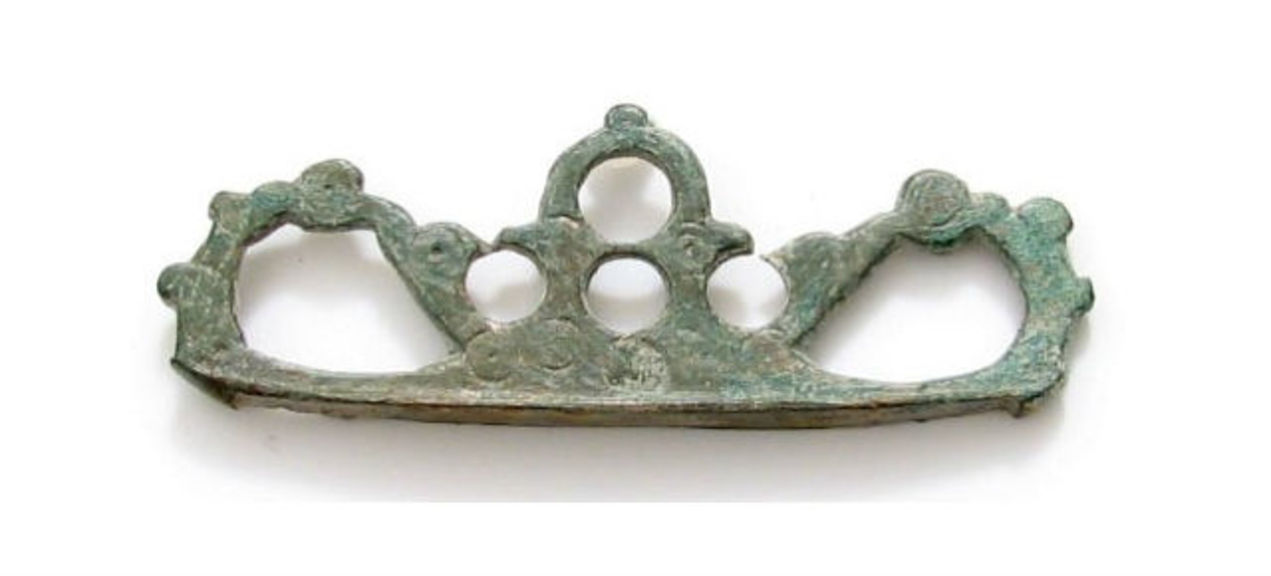
The lower edge of a novacila, such as this, would hold a thin metal blade
After several swipes of the razor blade, the Romans would then rub the stubble off with pumice stones, and massage oils and perfumes into the skin. Nicks from a dull razor would be treated with a plaster ointment made from spider webs soaked in oil and vinegar.
The trend in shaving was initially spurred by Alexander's celebrity endorsement, but it quickly became an integral part of Roman society. Barbershops, or "tonsors," were not just a service but also a local meeting place where the day's gossip and news could be freely exchanged. This was only among the classes that could afford it, of course, and if you were rich enough, you'd have a household barber. The richer you were, the less body hair you sported—yes, even pubic hair.
Hairlessness Was Next to Godliness in the Middle Ages

Castres, Bibliotheque Municipale
The practice of shaving saw a slight decline during the Middle Ages, though it remained popular, even if for an entirely different set of reasons from the Romans. See, after the Catholic church split from the Eastern Orthodox in 1054, Western church leaders encouraged shaving among its clergy to distinguish its members from the their Jewish and Muslim counterparts. That trend was put into canonical law in 1096, when the Archbishop of Rouen banned beards outright save for Crusaders in the Holy Land.
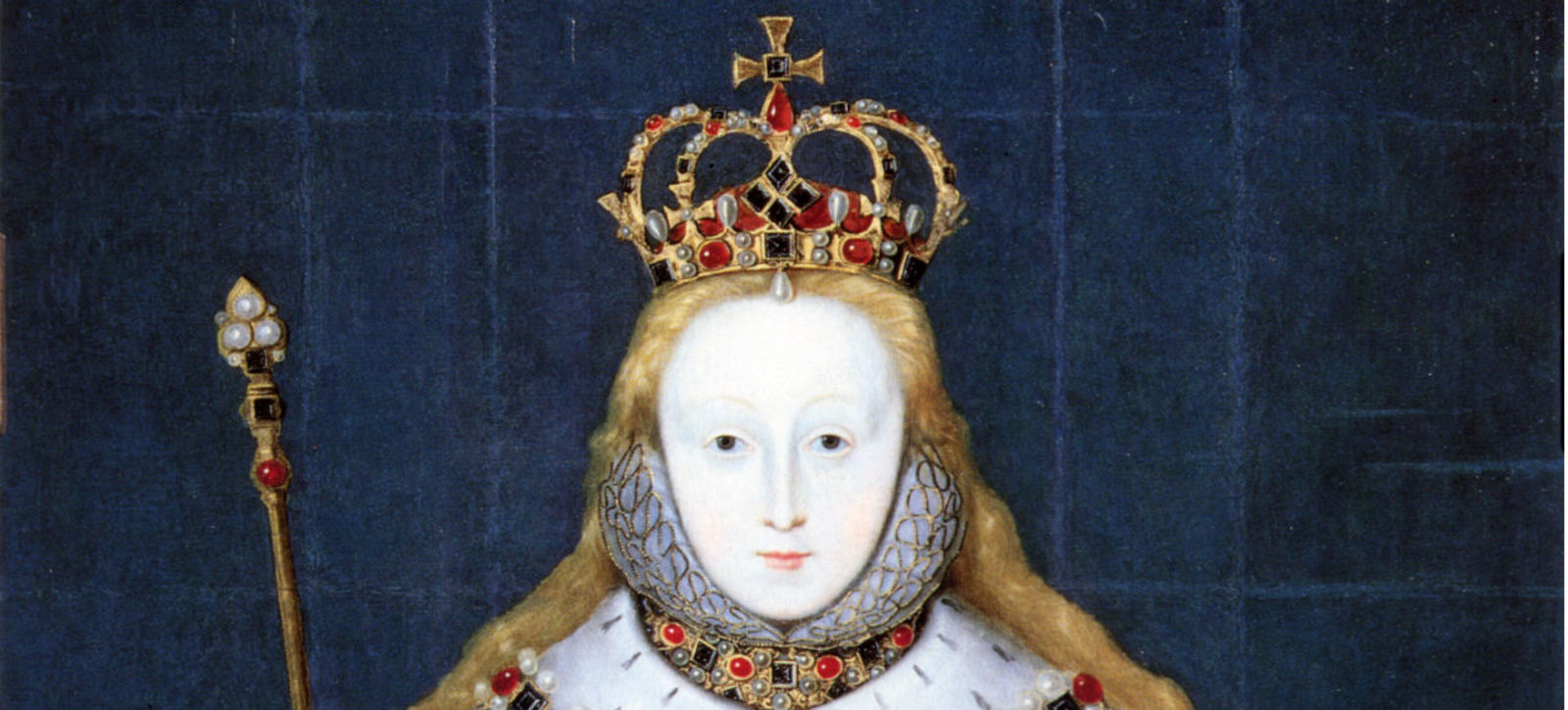
Queen Elizabeth In Her Coronation Robes
Shaving, similarly, remained popular among women in the Middle Ages, who followed the example of Queen Elizabeth I. She started the trend of tweezing the eyebrows (or applying a walnut oil, vinegar, and ammonia concoction) to elongate the forehead, but left everything below the neck au naturale.
The First Modern Safety Blades

A Straight Razor
It was not until the late 1700s that razors became more than sharp, exposed slabs of metal. Up until then, they were still regarded as specialized professional tools and everybody still went to barbers. Men of the day would shave themselves just as soon as they'd lay their own brick garden wall—it simply did not happen.
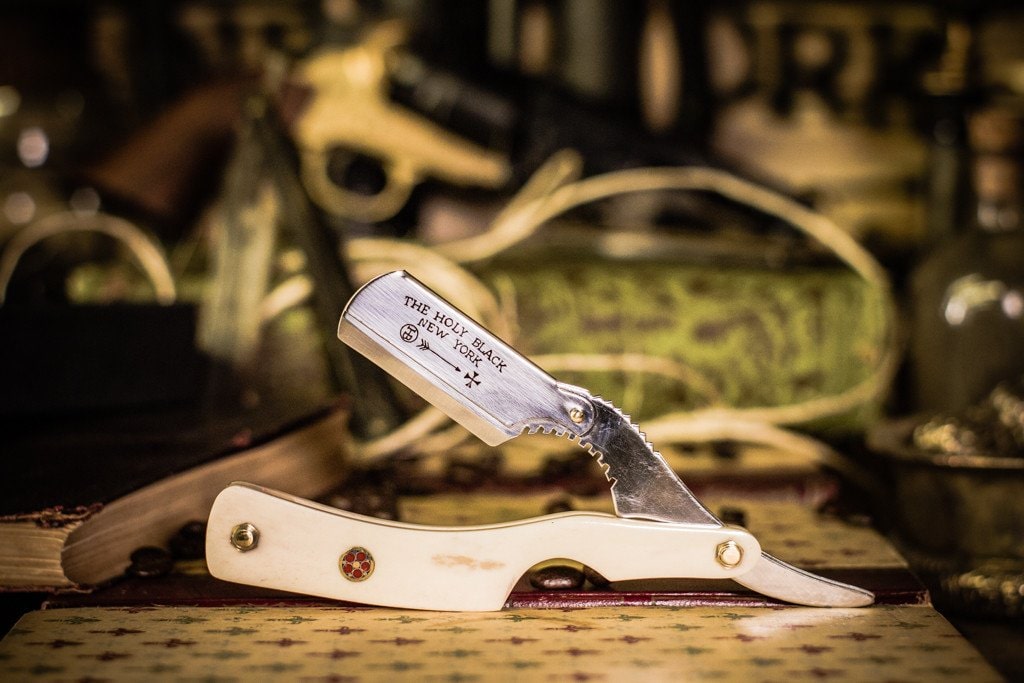
However, French inventor Jean-Jacques Perret dared to dream of a world where men would spend each morning leaning over a bathroom mirror removing their own stubble, and to that end, Perret developed the world's first safety razor—by installing a wooden guard onto a standard straight razor.
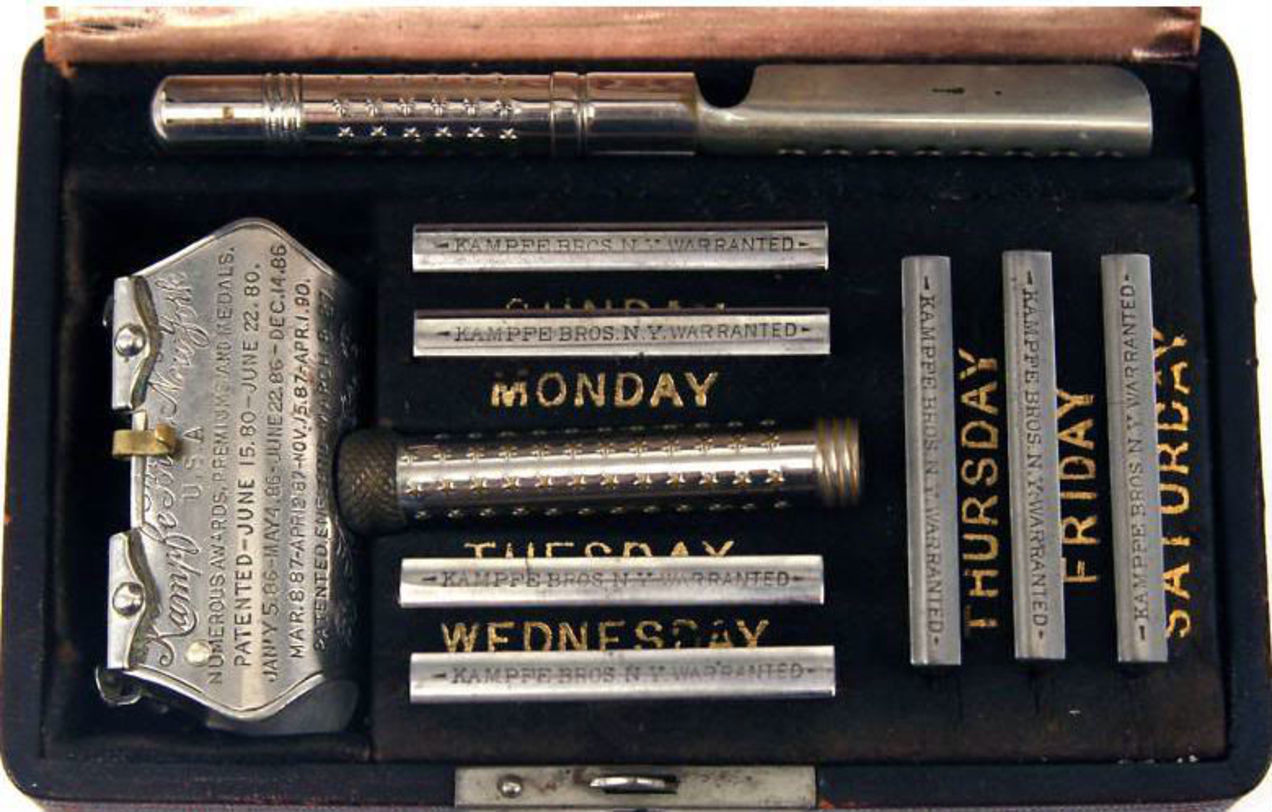
The Kampfe Brothers Star Razor Blade Kit
This design evolved again, in the early 1800s, into the modern Sheffield straight razor, featuring a rotating guard the doubled as a handle. Then, in 1880, the Kampfe brothers patented and marketed the world's first safety razor, incorporating a wire guard along the edge of the blade as well as a lather-catching head.
King C. Gillette and His Incredible, Replaceable Head
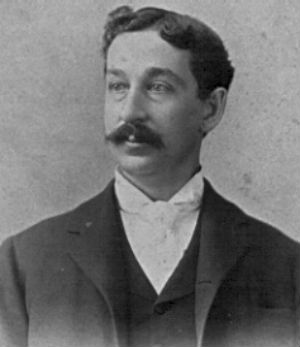
King C. Gillette
The problem with the Kampfe brothers' safety razor was the fact the head had to be routinely removed from the handle and sharpened on a whet stone. But rather than go through the trouble of sharpening that head, why not just replace it with a new one? That was the idea concocted by a traveling salesman by the name of King C. Gillette in 1895. And it would soon prove to be a money-making bonanza—just as soon as Gillette could figure out how to make a thin, sharp, disposable blade cheaply enough to work.
It took Gillette another eight years and the help of MIT professor William Nickerson to develop the first modern, double-edged safety razor. By 1906, Gillette was selling more than 300,000 razors a year, and a US Army contract supplying every WWI American soldier with a Gillette safety razor in his DOP kit helped further cement the Gillette brand name in the annals of American history.
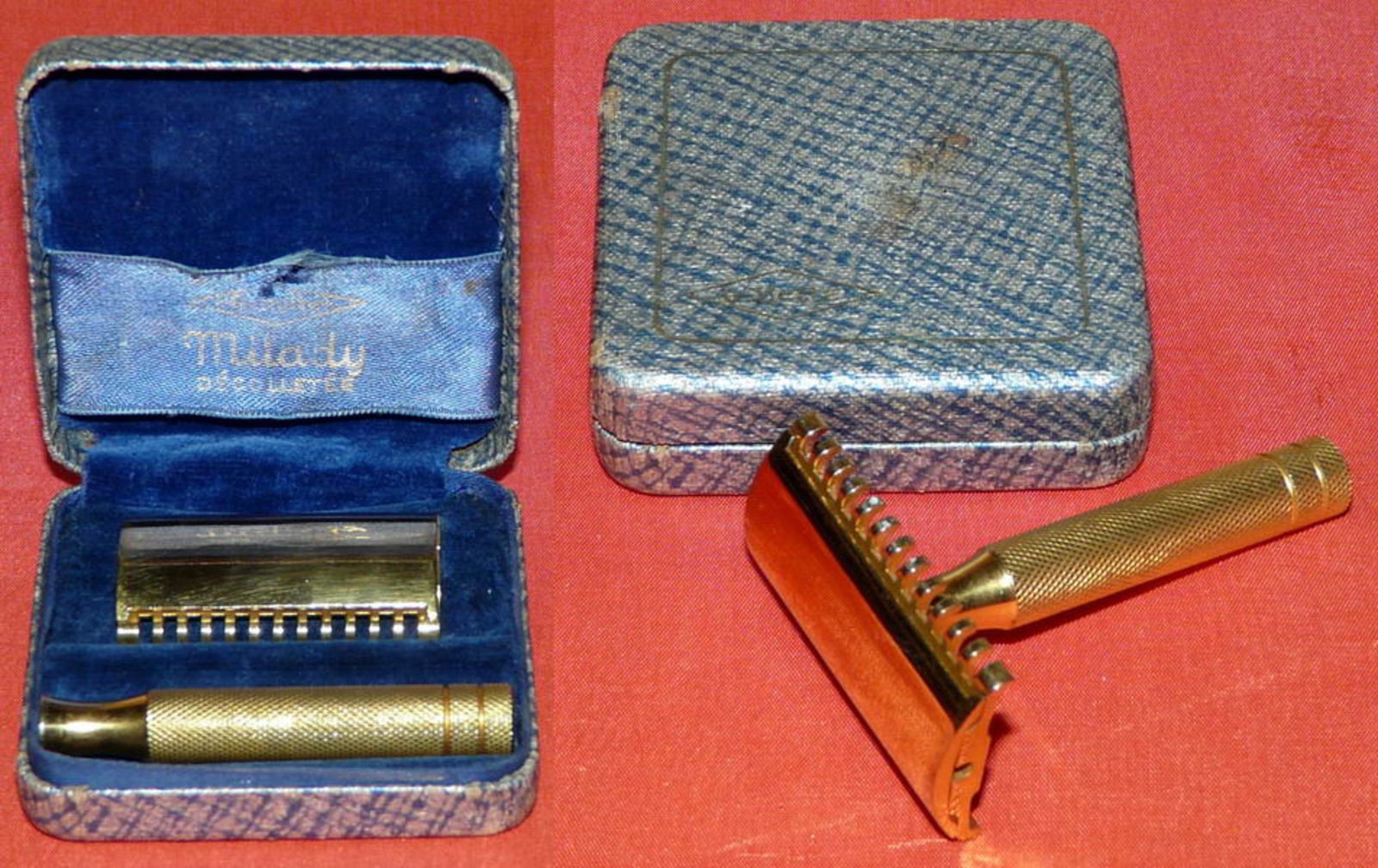
The Milady Decolletée
By the middle of the next decade, Gillette was more than a household name, it was a ubiquitous brand found in bathroom cabinets across the country. But still only for the gents.
However, rapidly changing social mores of the time saw women exposing more skin above the ankle and wrist—a leading fashion magazine of the time went so far as to show a woman in a swimming suit with her arms raised and armpits bare. Until that point, depilatory cremes were the de facto method of ladies hair removal. That changed in 1915, when Gillette debuted the Milady Decolletée, the first razor built specifically for women.
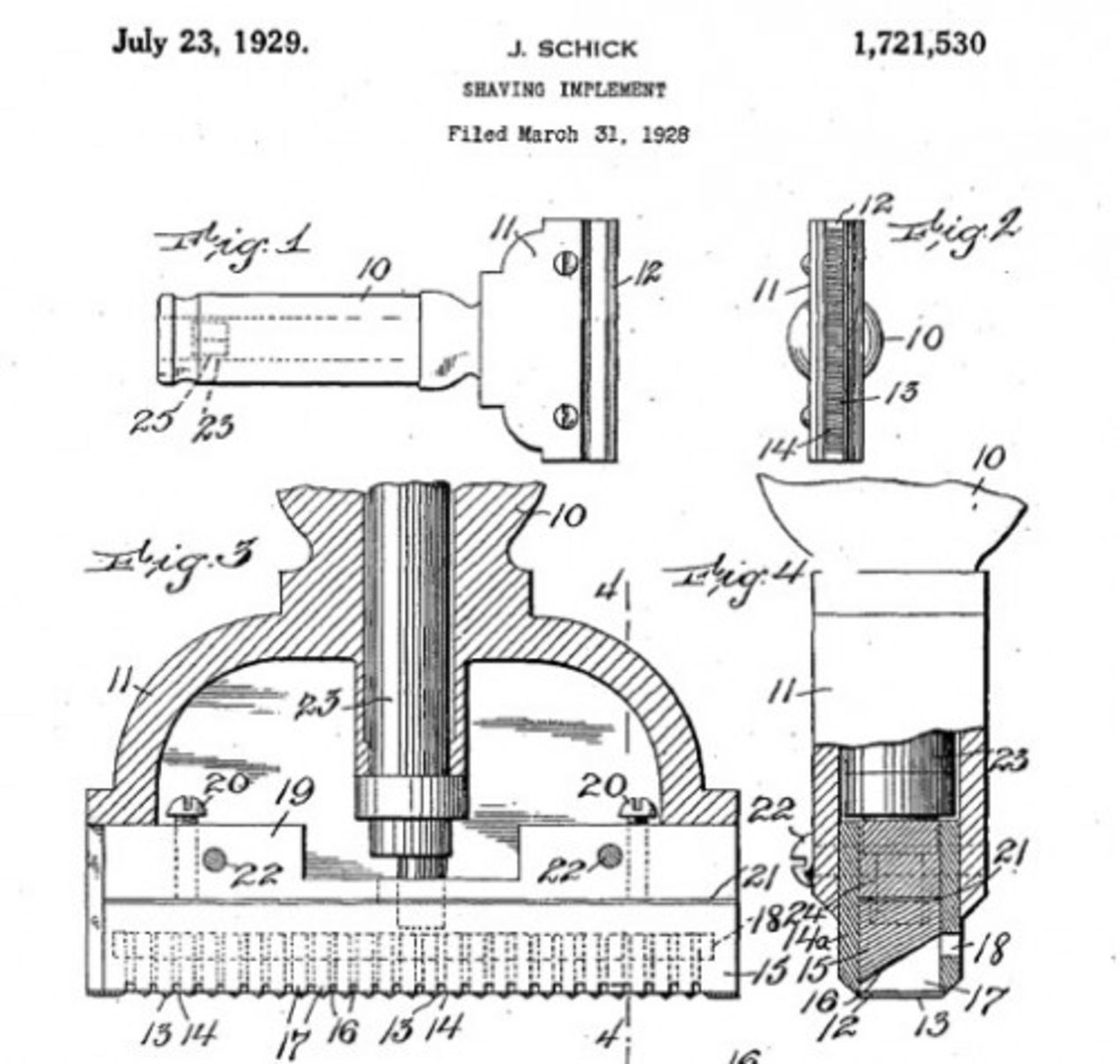
The Milady Decolletée instruction manual
Being a primarily manual razor manufacturer, Gillette was not involved with the advent of the electric razor in the 1920s (which we'll get to in a second) and did not really see any major technological breakthroughs until 1960, when its engineers perfected production of stainless steel blades. Unlike older blades, which would rust almost immediately after their first use, these blades remained sharp and oxide-free for multiple uses. This directly influenced the invention of the first fully disposable razor—where the entire device, handle and all, could be thrown away once dulled.
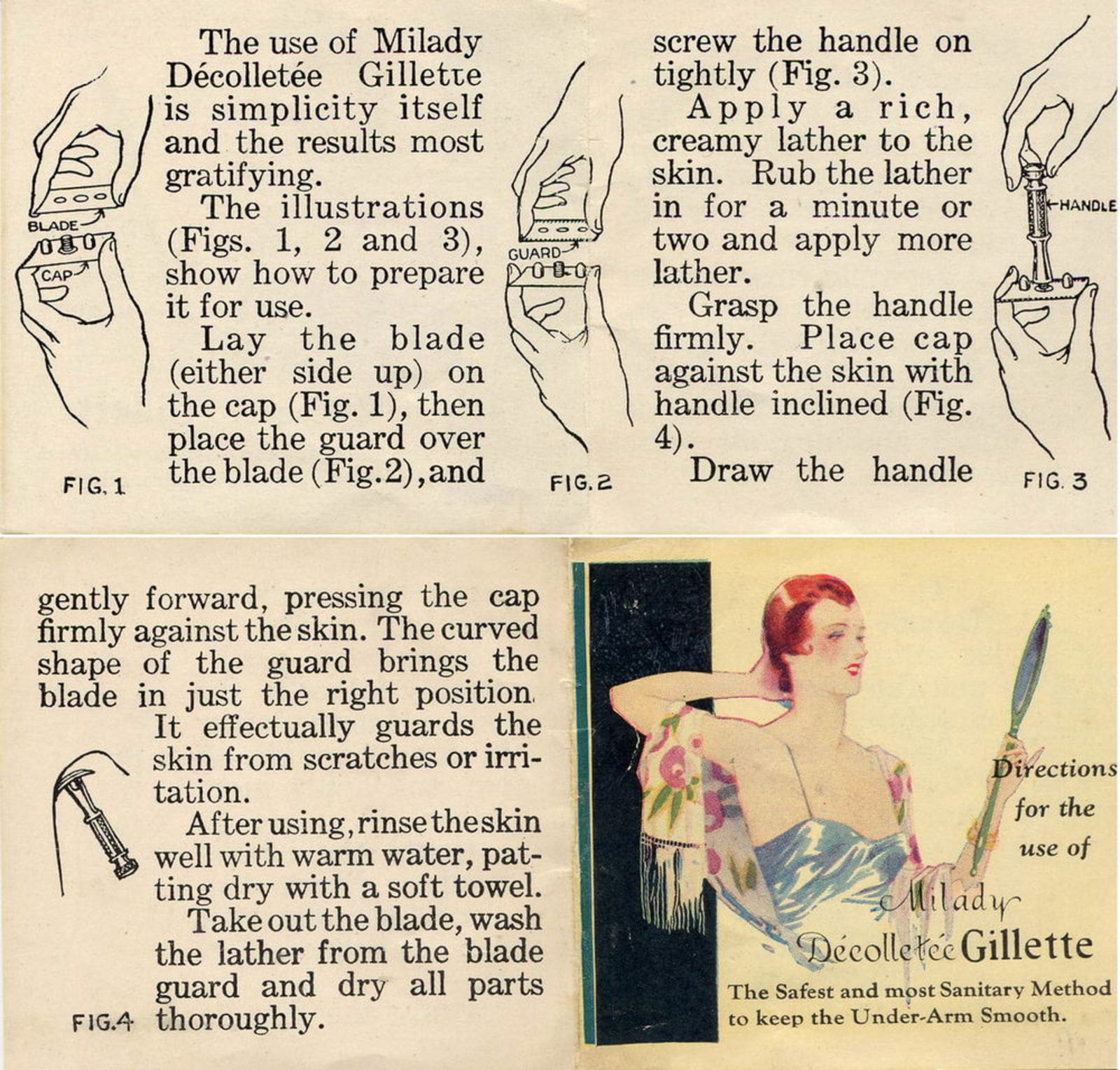
A two-page advertisement in Life Magazine Dec 10, 1971
Gillette once again revolutionized shaving in 1971, with its debut of the first two-blade razor, the Trac II. The multi-blade approach reduced the amount of force that had to be applied to shave—which in turn reduced the amount of irritation the skin endured—and has proven so popular that the number of blades per head has exploded from three blades, to five, to seven or more.
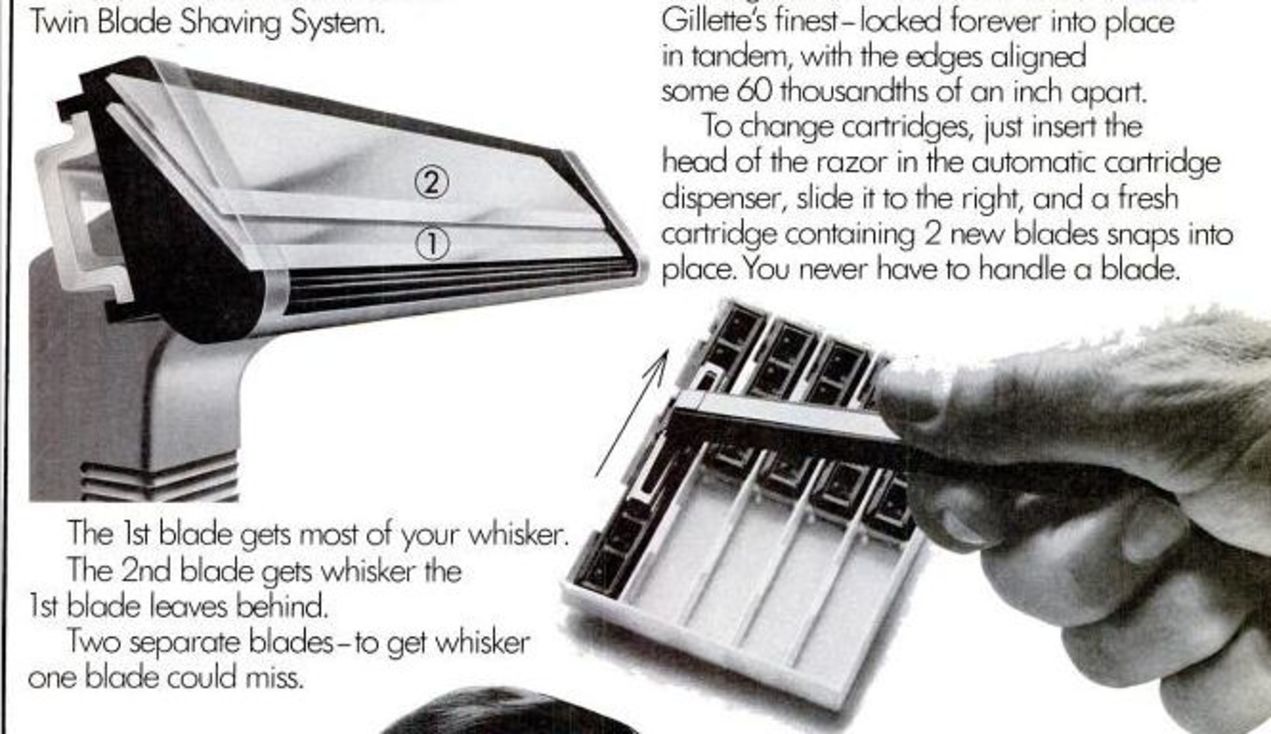
Multi Blade Razor
Jacob Schick and His Modern Method
As electricity in the American home became more common at the turn of the 1900s, the razor—like many previously manual devices—grew a corded tail and mechanical guts. The initial entries into the electric razor market, however, were met with only limited success. Electric razors wouldn't come into their own until 1928, when a retired Army colonel named Jacob Schick patented his own design—consisting of a cutting head driven by a handheld motor, connected by a flexible rotating shaft.
This model, which went on sale in 1929 (just in time for the stock market crash!), did not sell well—both because of the sudden crushing poverty that engulfed the nation and its unwieldy design. Schick's second attempt dropped the flexible shaft and instead plopped a smaller motor inline behind the cutting head, consolidating the clumsy motor and hose setup into a single sleek device. It was the iPod of its day, retailing for $25 each ($350 in today's money), and moving 3,000 units the first year. By 1937, Schick had sold 1.5 million of them and cracked open the new $20 million "dry shave" market.
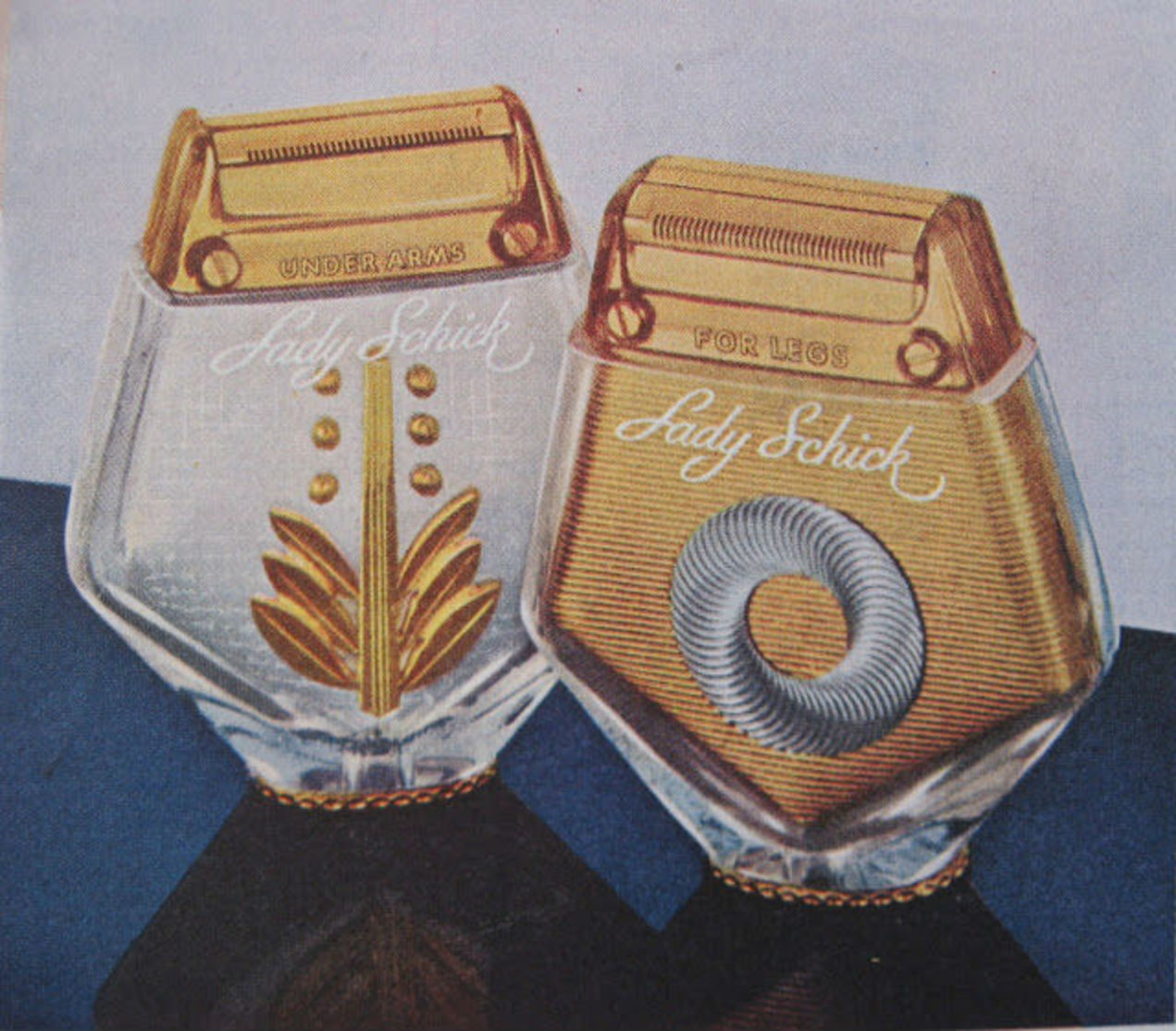
The Lady Schick - Image: Saturday Evening Post advertisement
In 1940, at the start of WWII, Remington opened the dry shave market further by designing and selling the first women's electric razor. Since nylon was a valuable wartime commodity, women were forced to go bare legged more often—and Remington's razor was billed as an easier, cheaper, and faster alternative to manual shaving.
Since the 1940s, hair removal technology has continued to advance. Waxing strips and laser hair removal methods both debuted in the mid-1960s, though laser's tendency to singe the skin as well as the hair quickly led to its disuse in favour of electrolysis, wherein a very fine heat probe is used to destroy a hair follicle, after which the hair itself is tweezed out.
These days, electric razors come in a huge variety shapes and sizes—from little finger-sized nose hair trimmers to vacuum-powered Flowbees—depending on their application. Though, just as with manual multi-blade razors, electric razors with multiple cutting heads are now more rule than exception.
They are just as often powered by rechargeable Li-ion batteries packs rather than wall cords, and use swivelling, rotating cutting heads as they employ the linear cutter devised by Schick nearly a century before. The problem now is picking the best one.
